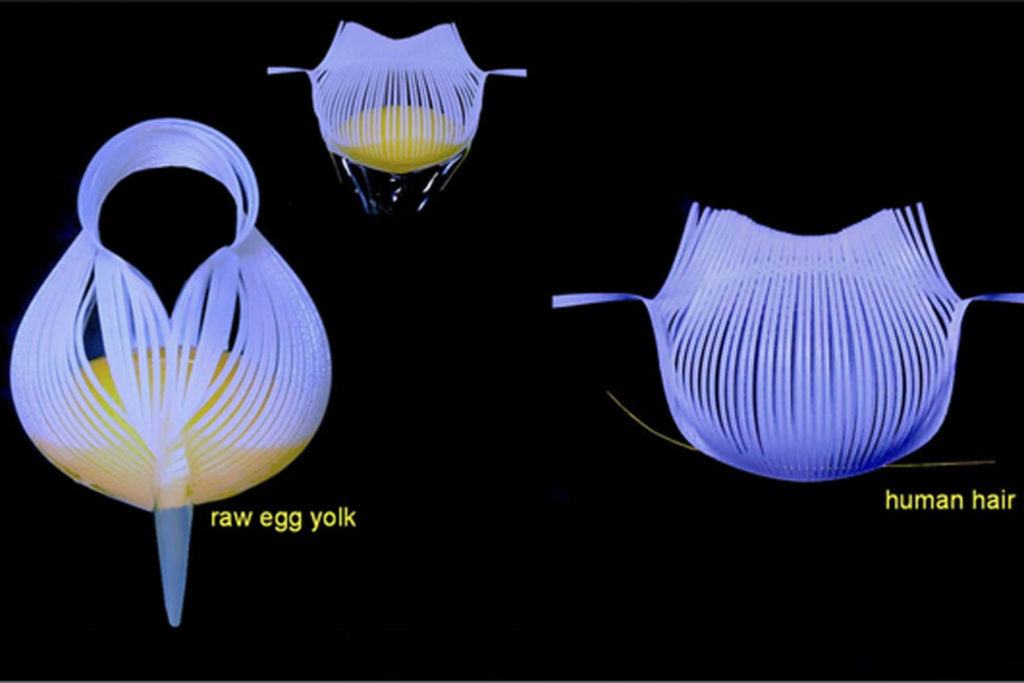
Most grippers work by applying pressure to an object from either side, but this approach won’t work with soft, fragile items and could damage them. A new robotic gripper, however, has found a solution using an ancient Japanese art form.
Related to the paper-folding art of origami, kirigami involves making a series of parallel slits in a flat sheet of material. When the two-dimensional sheet is subsequently pulled apart, pushed inwards, twisted or otherwise manipulated, the slits cause it to buckle into a predetermined, three-dimensional shape. The 3D shape the kirigami sheet takes on is determined not only by the slit patterns and the way in which it’s manipulated, but also by the shape of the flat sheet. A disc-shaped sheet, for instance, will typically morph into a sphere.
Led by Ph.D. student Yaoye Hong and Assoc. Prof. Jie Yin, a team at North Carolina State University has now developed a computer program that figures out what sheet shape, slit pattern and type of manipulation is required to end up with a specified 3D shape.
The scientists used the technology to create a flexible robotic gripper, the two sides of which slide together beneath a fragile object, meeting on its underside and surrounding it like a pair of cupped hands. Not only is the device gentle enough to lift even an egg yolk without breaking it, but it’s also precise enough to grasp and lift a human hair.
“This is proof-of-concept work that shows our technique works,” said Yin. “We’re now in the process of integrating this technique into soft robotics technologies to address industrial challenges.”
In recent years, the kirigami technique has been used in applications as varied as programmable balloons, robotic snakes, and anti-slip shoe soles. A paper on the research was recently published in the journal Nature Communications.
 TEXTILES.ORG
TEXTILES.ORG


